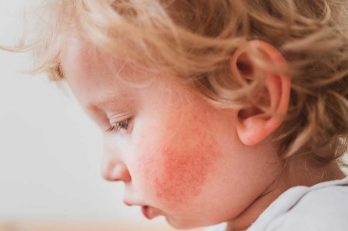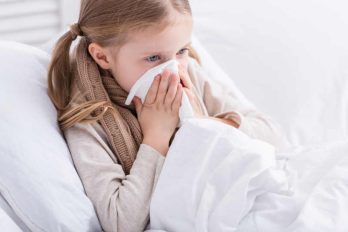Childhood allergies are becoming more widespread, affecting millions of youngsters globally. Understanding how to identify and manage these allergies is critical for parents and caregivers who want to ensure their children’s health and wellbeing. This blog discusses common allergies in children, how to identify them, and how to manage allergen exposure.
Common Childhood Allergies
Allergies develop when the immune system reacts to a foreign chemical that normally does not trigger a reaction in most people. Children can be allergic to a range of chemicals, but the most common allergens are:
- Milk, eggs, peanuts, tree nuts, soy, wheat, fish, and shellfish are some of the most common allergies in children.
- Environmental: Pollen, mold, dust mites, and animal dander can all cause allergic reactions.
- Bees, wasps, and other insects can sting you.
- Medications: Penicillin and other medicines are frequent causes.
Identifying Allergies in Children
Identifying an allergy in a child can be difficult because symptoms can range from minor to severe and may mirror other diseases. Common indications of an allergic reaction are:
- Skin reactions include hives, itching, and eczema.
- Respiratory issues include sneezing, coughing, a runny or stuffy nose, and difficulty breathing.
- Gastrointestinal symptoms include nausea, vomiting, diarrhea, and abdominal pain.
- Anaphylaxis is a serious, life-threatening reaction that can limit breathing, cause a significant drop in blood pressure, and alter heart rate.
If allergies are suspected, parents should constantly monitor their child’s reactions and consult with healthcare specialists for appropriate testing and diagnosis.
Managing allergen exposure
Once an allergy has been discovered, it is critical to limit allergen exposure. Here are some strategies that can help.
- Avoiding known allergens is the most efficient strategy to prevent allergic responses. For food allergies, this entails reading labels carefully and being mindful of how food is prepared.
- Educate caregivers and teachers. Ensure that everyone engaged in the child’s care is aware of their allergies and knows how to avoid and manage them, including how to use drugs such as antihistamines or epinephrine auto-injectors.
- Develop an Allergy Action Plan. Create a strategy outlining how to address allergic reactions, including warning signs and emergency procedures. Ensure that the plan is easily accessible to everyone caring for the youngster.
- Allergy-Proof Your Home: Air purifiers, carpet removal, and regular cleaning can help minimize allergens such as dust mites and pet dander.
While dealing with kid allergies can be difficult, good diagnosis and proactive management can significantly reduce risks and enhance your child’s quality of life. Education, vigilance, and a well-prepared environment are your most effective weapons for keeping your child safe and healthy. Remember that with the correct approach, most children with allergies can have active and satisfying lives.




